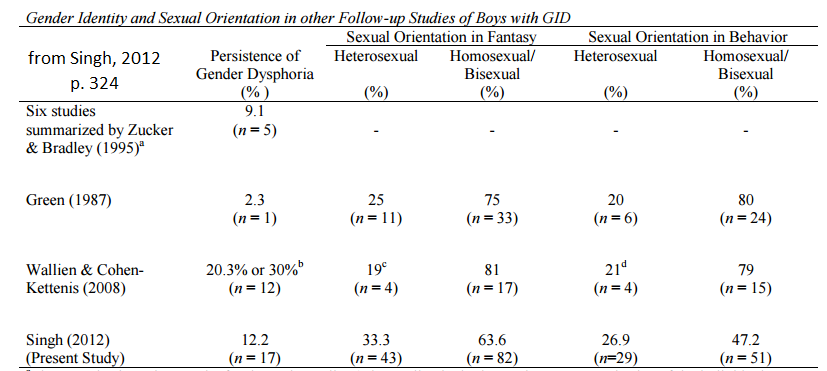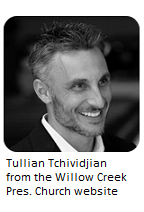UPDATE: In a post out on 8/27/16, Adam Keiper, editor at The New Atlantis magazine responds to this post with a rebuttal to my points below. I urge you to go read it. I in turn respond to him. I also make a correction in my original post below based on his communication to me.
————————————————- (original post below)
Over the past year, hot discussions of sexual orientation have been pushed aside by controversies over gender identity and bathrooms. A new article from The New Atlantis shows that both topics have plenty of life. Yesterday, social media was buzzing about a new “study” of sexual orientation and gender identity by Lawrence Mayer and Paul McHugh. Actually, the article was not a study but a review and summary of empirical studies. As far as I can tell, it is being touted most by conservative leaning and anti-gay organizations.
The New Atlantis describes itself as a “Journal of Technology and Society.” However, the article did not receive peer review and it shows. Lawrence Mayer, the first author, is not well known in sexuality research circles but the second author is. Paul McHugh is retired from Johns Hopkins and was responsible for discontinuing the sex reassignment program there. He also was an advisor to the Repressed Memory Foundation in the 1990s.
Quickly, the National Organization for Marriage touted the paper as “Groundbreaking New Research.” Even calling the paper a new study isn’t accurate, there are no new studies in the paper. A bunch of old ones are missing as well.
In this post, I want to include some initial reactions and then some notes from Michael Bailey, professor at Northwestern, who was cited several times in TNA paper. I am going to focus on their points about sexual orientation and leave the gender identity points for a future post.
Here is their summary of research regarding sexual orientation:
● The understanding of sexual orientation as an innate, biologically fixed property of human beings — the idea that people are “born that way” — is not supported by scientific evidence.
● While there is evidence that biological factors such as genes and hormones are associated with sexual behaviors and attractions, there are no compelling causal biological explanations for human sexual orientation. While minor differences in the brain structures and brain activity between homosexual and heterosexual individuals have been identified by researchers, such neurobiological findings do not demonstrate whether these differences are innate or are the result of environmental and psychological factors.
● Longitudinal studies of adolescents suggest that sexual orientation may be quite fluid over the life course for some people, with one study estimating that as many as 80% of male adolescents who report same-sex attractions no longer do so as adults (although the extent to which this figure reflects actual changes in same-sex attractions and not just artifacts of the survey process has been contested by some researchers).
● Compared to heterosexuals, non-heterosexuals are about two to three times as likely to have experienced childhood sexual abuse.
● Compared to the general population, non-heterosexual subpopulations are at an elevated risk for a variety of adverse health and mental health outcomes.
● Members of the non-heterosexual population are estimated to have about 1.5 times higher risk of experiencing anxiety disorders than members of the heterosexual population, as well as roughly double the risk of depression, 1.5 times the risk of substance abuse, and nearly 2.5 times the risk of suicide.
● Members of the transgender population are also at higher risk of a variety of mental health problems compared to members of the non-transgender population. Especially alarmingly, the rate of lifetime suicide attempts across all ages of transgender individuals is estimated at 41%, compared to under 5% in the overall U.S. population.
● There is evidence, albeit limited, that social stressors such as discrimination and stigma contribute to the elevated risk of poor mental health outcomes for non-heterosexual and transgender populations. More high-quality longitudinal studies are necessary for the “social stress model” to be a useful tool for understanding public health concerns.
First, here is Michael Bailey’s quick reaction:
1. Their review of sexual orientation is not up to date (A major omission is that it neglects to cite our recent magnum opus on this topic: http://psi.sagepub.com/content/17/2/45.full.pdf+htmlf). The idea that sexual orientation is fluid has some plausibility for women, but not for men.
2. I agree with the authors that discrimination alone is unlikely to completely explain differences between heterosexual and homosexual people in mental health profiles, although it may contribute.
3. They are right on that the idea of innate, fixed gender identity is not consistent with empirical evidence. I differ from them, however, in believing that sex reassignment is still the best option for some individuals.
4. Most importantly, I agree that all of these issues should be openly discussed and researched. There is little government support for open-minded investigation for these controversial issues. That is unfortunate and exactly backwards. Support should be directed to resolve the most contentious issues.
As I reviewed the sexual orientations sections, I agree with Bailey. I especially agree that readers should read this major review of research on sexual orientation published earlier this year. Mayer and McHugh’s paper is missing any serious discussion of epigenetics, they overlook the new genetic linkage paper involving gay brothers, (they do address it, see the follow up post) as well as work on “gay rams.” The TNA authors minimize the neural differences between gays and straights, calling them “minor differences in brain structures.” How do these authors know what differences are minor and which are not? In fact, the differences in symmetry and brain activity are quite provocative and have not been accounted for by any environmental theory. Of course, we need more research with larger sample sizes but Mayer and McHugh just shrug these studies off as inconsequential.
Regarding sexual abuse, the authors review several studies which demonstrate higher rates of sexual abuse among GLB people as opposed to heterosexuals. For the most part, they report the relevant details but they failed to catch the mistakes in the Tomeo study and report it incorrectly (see this post for the problems with using Tomeo). Even though some who are touting the study miss this, the authors provide caution for those wanting to see homosexuality as the result of sexual abuse:
In short, while this study suggests that sexual abuse may sometimes be a causal contributor to having a non-heterosexual orientation, more research is needed to elucidate the biological or psychological mechanisms. Without such research, the idea that sexual abuse may be a causal factor in sexual orientation remains speculative.
They say “sometimes.” I would say infrequently or rarely and would add that we really don’t know. What we do know is that most people who are GLB were not abused. The TNA paper affirms that observation.
On the “born that way” claim, I find it contradictory that the authors express uncertainty about the causes of orientation but then say with great certainty that the “born that way” theory isn’t supported by scientific evidence. This line is apparently meant to hook the social conservatives which indeed it has. I mentioned the misleading “Groundbreaking New Research” headline from NOM, and then I just saw Liberty Counsel’s email which leads: “Scientific Research Debunks LGBT Propaganda.”
For readers wanting a more thorough review of the literature, please see the paper from Bailey and colleagues linked here.

